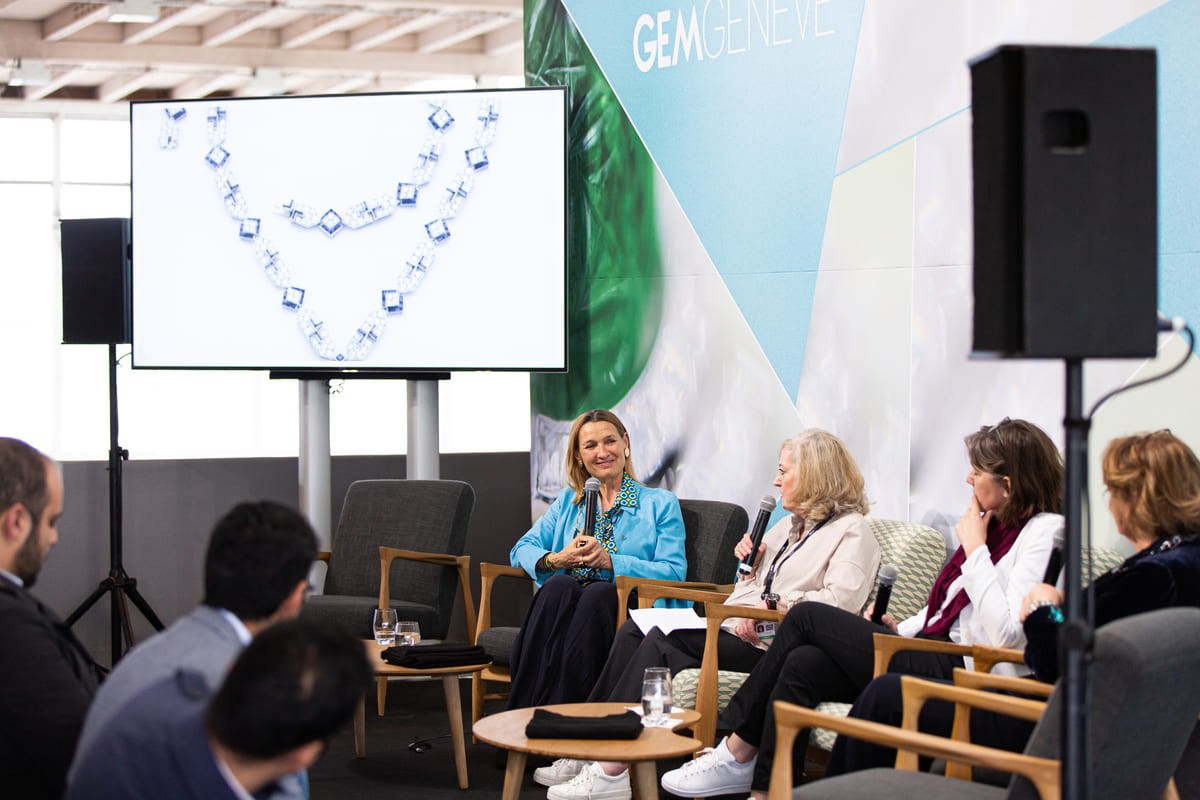DEMYSTIFYING EMERALDS
Image caption: White gold earrings by VAK Fine Jewels featuring vivid green Colombian emeralds certified insignificant oil, with rose-cut diamonds. Since time immemorial, emeralds have captured our imagination like no [...]

Writing about jewellery and doing it by looking back in time is quite a recent activity. Antique jewellery did not use to be part of the fashion world, and it was something only discerned collectors could appreciate. In the present day, a new trend for antique and vintage jewels began when Miuccia Prada started wearing antique brooches on her clothes in the 1990s. Another robust input to jewellery, which brought back a solid reference to the history and techniques of jewellery design, is JAR (Joel Arthur Rosenthal): he proved that a way to look to the future of jewellery is often through its past.
Little by little, the most prominent jewellery Maisons, together with the auction houses, started writing monographic works on their heritage. The production of jewellery books brought back and enhanced an appreciation for the historic value of their creation, combining the brands’ continuity in the present and their allure.
So, what is the value of legacy or heritage to a brand? Amanda Triossi stated that one of the critical aspects to consider is that a brand with a strong heritage has gravity; it proves its longevity and financial success. Cartier was the first Maison to build on this, and it started a process which shows how rich and inspiring the Maisons are.
Brand heritage indeed confirms a brand’s status not only for what it created in the past but also and foremost for what it will create in the future. As a result, a brand’s heritage is an endless source of inspiration for jewellery designers, and it allows the brand to be consistent with its core DNA. This is also why big names such as Cartier, Bulgari and Van Cleef & Arpels all have a Heritage Department, hosting their heritage collections – collections that are constantly enriched not only by antique and vintage but also by contemporary pieces.
Therefore, it is a pity that there is not a higher focus on the history of jewellery in the courses of History of Art – knowing this would allow a full appreciation of stylistic influences and designs because the link between the past and jewellery is not so obvious. Vanessa Cron highlighted how there are still a limited number of schools where one can learn about the history of jewellery and that the history of a brand in jewellery is critical. Because if a brand wants to be part of history, it should tell its history. First, the brand needs to know it – and many houses did not have such a historical awareness. They knew they had a past, but they did not learn about their history, which is quite different.
So, once a brand starts looking into its past, it starts looking into its history and can share it with the world. Consequently, the brand’s history becomes part of the newest creations as these will be inspired by the brand’s history and legacy. Therefore, according to Vanessa Cron, the history of a jewellery brand is so vital for its future development.
One additional point for consideration is now about contemporary jewellery brands – how can they build their heritage and legacy, considering that they need to establish their name first? Because when you are making your jewellery brand, sourcing the gems, designing the pieces, finding workshops willing to produce for you and managing all the costs, you might forget simply to take pictures of your creations. Amanda Triossi said this is a pity because it prevents future generations from appreciating a new brand’s talent and innovative design approach. Jewellery creations show the brand’s vision. It would be imperative to document that for the future – not only because it is about jewellery, but also about art.
If a jewel is a piece of art, it is also true that one of the most critical parts of a jewellery brand’s legacy lies in storytelling. Storytelling enhances the value of the brand’s legacy and its authenticity. History is so rich in events, so meaningful, and it has been around for such a short time that the public keeps coming back to it, willing to know more and more. Brand storytelling is not only about an object (however beautiful it might be), but it is also about the people behind it – from the brand’s owners to the designers and the gem experts and the workshops that realised these masterpieces. Storytelling reveals all this to a public who was unaware and creates the jewel’s magic, fascination, and human side.
Through storytelling, a jewel becomes the history of someone; it is passing through the hands of people, which is extraordinary because jewellery is also the only form of wearable art. So that means that one could wear a jewel worn by someone else 300 years before.
A jewel communicates and transmits history and provenance. So storytelling is a fundamental way to define a context around and a better understanding of these jewels, which will mean a higher value – the more you understand the creation, the more value you will recognise in it.
genevegemtoday5 May 2019
Image caption: White gold earrings by VAK Fine Jewels featuring vivid green Colombian emeralds certified insignificant oil, with rose-cut diamonds. Since time immemorial, emeralds have captured our imagination like no [...]